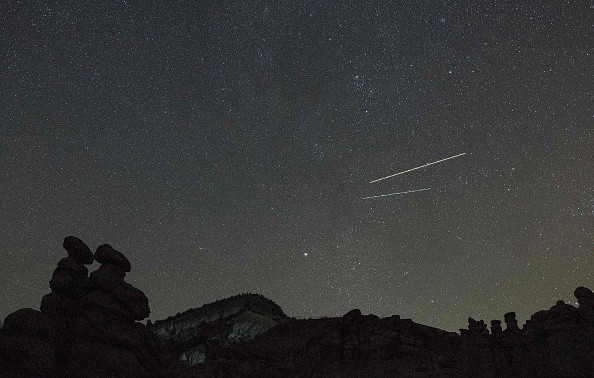The impact of ending the dinosaur era about 66 million years ago was the worst day life ever known on Earth. A six-mile-wide asteroid called the Chicxulub struck the waters off what is now Mexico, causing mass extinction and killing more than 75 percent of Earth's species.
An immeasurable earthquake shook and rolled up the planet's crust. A tsunami over 50 meters high struck the North American coast. Wildfires were ignited by the scorching heat of the asteroid's first collision plume followed by a stream of debris, hundreds to thousands of kilometers away from the site of the collision.
The asteroid that killed all dinosaurs

Hundreds of places around the world hold evidence of this cataclysm, but in rare places in North Dakota, fossil fish that appear to have died within an hour of impact contain important information, all of lifeforms suffered on a deathly collision on spring.
Earth was permanently changed after a giant asteroid hit our planet in the late Cretaceous period (145-66 million years ago), causing a global mass extinction that wiped out 76% of the planet's life. Living on Earth, including all non-avian dinosaurs, pterosaurs, and most marine reptiles.
Scientists recently determined the season of the disaster and linked it to spring in the Northern Hemisphere, after analyzing fossil animals that died minutes after the impact, according to National Geographic.
They found the fossils at an archaeological site called Tanis, where a river once flowed through what is now North Dakota After the asteroid struck near the Yucatan Peninsula in Mexico, the shock sent powerful waves rushing upstream towards Tanis, washing away fish and forest animals and burying them alive under the Earth's layers.
According to Live Science, researchers report in a recent study that when water settles, it leaves behind an amazingly well-preserved 3D snapshot of destruction taken within 30 minutes of asteroid collision.
Fossils of these filter-eating fish also contain clues to their seasonal growth cycles, suggesting that spring came when the fish died and the dinosaurs' reign came to an abrupt end.
Underwater creatures got lost in time
Named after the "lost" ancient Egyptian city, the site is a private ranch within a small outcrop of the larger Hell Creek Formation, a series of rock formations that recorded hundreds of years before the dinosaurs went extinct.
In 2017, While a master's student at the Vrije Universite Amsterdam, he visited Tanis with a team that included Jan Smit, a paleontologist at the university, and Robert De Palma, a paleontologist who led the excavation in the field.
According to Smit, 66 million years ago, the region of North America was a river valley that traversed the surrounding floodplain at depths of more than 33 feet. When the Chicxulub struck, the impact ran outward through the continental crust, causing a powerful tremor that reached Tanis within 15 to 30 minutes.
The shivering land sent waves from the inland sea, which rushed upstream to the Tanis ruins, immediately filling whatever was there at the time.
© 2025 NatureWorldNews.com All rights reserved. Do not reproduce without permission.





